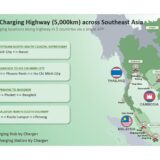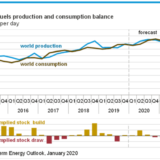EIA report projects broad growth in energy consumption for Asian countries, beyond China and India
Much of the future growth in world energy consumption will occur in Asia outside of the Organization for Economic Cooperation and Development (OECD), according to the recently released report from the U.S. Energy Information Administration (EIA).
Although China and India account for most of the region’s energy consumption, the EIA projects broad growth in other Southeast Asian nations, including Indonesia, Thailand and Malaysia.
“These other non-OECD Asian nations are relatively small consumers of energy individually, but collectively they accounted for 7% of world primary energy consumption in 2015,” according to the “International Energy Outlook 2017 (IEO2017).”
IEO2017 projects that by 2040, the nations of non-OECD Asia, excluding China and India, will account for nearly 10% of the world’s primary energy consumption.
These countries’ collective gross domestic product (GDP) is projected to nearly triple between 2015 and 2040, far outpacing population growth, which is expected to increase by 30% between those years. Projected economic and demographic trends lead to a strong increase in average household income, from about USD5,000 (in real 2010 dollar terms) in 2015 to more than USD12,000 by 2040 in the IEO2017 reference case.
The nations of other non-OECD Asia share many structural similarities and trade links with the growing economies of China and India, such as a relatively low cost of labor, rising personal income and capacity for infrastructure growth.
Similar to what has happened in China and India, the agricultural sectors in these countries are expected to decline as a share of the economy, while their construction industries grow to accommodate increasing urbanisation. Energy-intensive manufacturing, including motor vehicle and chemical production, is also expected to grow rapidly.
Altogether, industrial energy consumption in other non-OECD Asian countries excluding China and India is projected to increase by 60% between 2015 and 2040.
Urbanisation and rising standards of living are key components to increased energy use in transportation and in buildings in the other non-OECD Asian economies. IEO2017 projects passenger travel to more than triple between 2015 and 2040. IEO2017 also projects a shift in transportation mode, with the share of automobile travel growing from 30% in 2015 to nearly 50% by 2040, at the expense of two- and three-wheel vehicles and mass transit.













